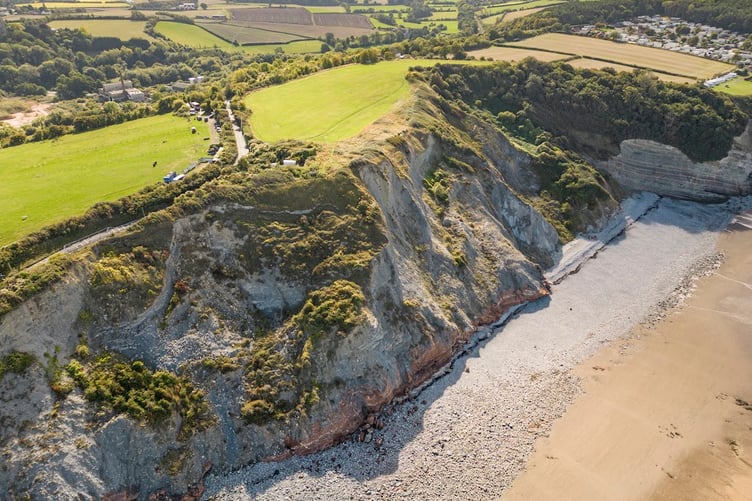A SAXON fort on the cliffs of West Somerset is at risk of falling into the sea due to coastal erosion, heritage experts said this week.
Daw’s Castle, near Watchet, is a fortified Saxon settlement built as part of King Alfred’s coastal defence network in response to the threat of Viking raids.
It was connected by a herepath road to a chain of coastal forts built between the eighth and 10th centuries, allowing troops to move along the coast and cover Viking movements at sea.
While the southern lines of defences, including masonry footings and an earth bank, survive, the northern defences have been lost to coastal erosion.
Now, the site has been added to Historic England’s heritage at risk register, which gives an annual snapshot of the health of England’s valued historic buildings and places, helping ensure they can be protected and enjoyed in the future.
Heritage is acknowledged as playing a vital role in the pride people feel about their local communities, giving meaning to the places where people live, work, and spend time, connecting them, and inspiring creativity, as well as boosting economic growth.
A Historic England spokesperson said: “When it is not looked after and used, communities feel a sense of decline.
“Historic England works together with partners and communities in inventive ways to breathe new life and hope into places that need it most.
“We want to see ‘at risk’ historic buildings brought back into productive use so they can be enjoyed by local communities and contribute to the local economy.
“This year alone, 48 sites in the South West have been rescued and their futures secured.
“Many buildings and sites have been rescued with the help and commitment of local people, communities, charities, owners, and funders, including the National Lottery Heritage Fund.”
Historic England has been harnessing the power of heritage for the planet, contributing to achieving net zero carbon emissions by facilitating the adaption and re-use of historic buildings.
In the past year, 33 historic buildings and sites in the Westcountry have been added to the register because they are at risk of neglect, decay, or inappropriate development.
Historic England co-chief executives Claudia Kenyatta and Emma Squire said: “The heritage we see all around us impacts how we feel about our local places.
“The annual heritage at risk register gives us the opportunity to celebrate the many benefits of bringing our historic buildings back into use.
“The best way to protect our buildings is to re-use them, turning them into places of local connection and joy.
“The sites that have been saved and have come off the register this year really highlight the benefits of working together in partnership, and with communities, to create positive, sustainable change.
“Together, we can safeguard our heritage for future generations.”
Heritage Minister Baroness Twycross said: “It is fantastic to see so many historical sites saved for communities up and down the country.
“This year alone our £15 million Heritage at Risk Capital Fund has been key to saving buildings like these.”





Comments
This article has no comments yet. Be the first to leave a comment.